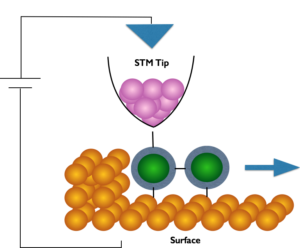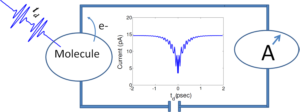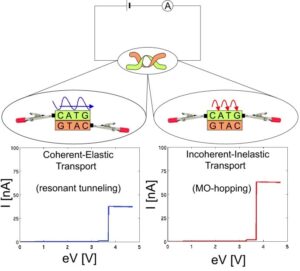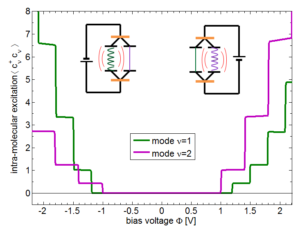

Uri Peskin

CV
Quantum dynamics and scattering, Open quantum Systems, Charge transport through molecular systems, Driven quantum systems, Molecular electronics, New algorithms for quantum dynamics Simulations.
How do charges move through molecular systems? This question gains much attention due to the abundance of charge transfer and charge transport processes in natural molecular systems (such as photosynthetic centers, the vision unit, and more), and due to the anticipation that molecular electronic devices could perform much faster and with higher efficiency in comparison to state of the art technology.
Our theoretical research on the effects of molecular bridges on charge transport rate and direction aims to provide fundamental understanding of these processes and new guidelines for the control of transport through molecular bridges by an educated design of their chemical structure. Classical mechanics and kinetic theories are not valid for even a qualitative description of these processes on the nano-scale. Instead, the transport is controlled by quantum tunneling, interferences and coherent wave packet evolution, where resonance conditions derived from the discrete energy levels structure of molecules, play a crucial role.
Our theoretical strategy for characterizing these quantum transport processes is based on introducing and solving models which capture the important physics of the system, where the dynamics can be calculated exactly or using controlled approximations. This approach enabled us to provide qualitative guiding lines for controlling the transport rate or direction by modifications in the structure or the chemical composition of the molecular quantum wires. Given the complexity of a quantum mechanical treatment of the electronic and nuclear degrees of freedoms in a molecule embedded in its microscopic environment, our approach which is based on tractable physical models and propositions of generic experiments (see below) is an attractive alternative to multi-parameter computer simulations. The latter are based on very detailed atomic scale description but often involve uncontrolled approximations with respect to the quantum structure and dynamics. Some of our recent predictions for new phenomena associated with electron transport through molecular wires are highlighted below:
Nano electromechanical memory devices: We recently pioneered the investigation of ligand-mediated forces in colloidal semiconductor quantum dot arrays, proposing the first experiment aimed to induce and measure inter-dot mechanical response by a novel electromechanical effect (to be published). The possibility for using this electrochemical effect in nano-scale memory devices is currently under study.
On the way to THz electronics: Molecular electronic junctions are often studied and operate under steady state conditions, where ultra-fast intramolecular dynamics can’t be observed directly. Recently, we proposed the first experiment aimed to measure intra-molecular dynamics (on the sub psec time scale, or the THz frequency scale) in a molecular junction setup, using conventional electronics (with typical ~10 nsec response) and ultrafast laser pulses (See Selzer and Peskin, J. Phys. Chem. C. Articles ASAP (2013)).
We develop algorithms for simulations of transient dynamics in single molecule conductance junctions, and introduce new single molecule based devices. See Volkovich and Peskin, Phys. Rev. B., 83, 033403-033406 (2011); Peskin and Galperin, J. Chem. Phys. 136, 044107 (2012); White, Peskin and Galperin, Phys. Rev. B. (in press, 2014);
New quantum transport phenomena in DNA: We recently proposed the existence of a new charge transport through DNA. This mechanism is fully quantum mechanical and associated with long range correlations in long ordered DNA sequences. Our research aims at potential applications of this quantum transport mechanism for molecular electronic devices, providing supporting theoretical evidence for its contribution and proposing new experiments for measuring and utilizing this effect. See: Brisker-Klaiman and Peskin, J. Phys. Chem. C. 114, 19077-19082 (2010); Phys. Chem. Chem. Phys., 14, 13835–13840 (2012); Simon, Brisker-Klaiman and Peskin, Advances in Quantum Methods and Applications in Chemistry, Physics, and Biology, Progress in Theoretical Chemistry and Physics 27, (Springer, Switzerland 2013).
Nano-catalysis: We recently pioneered the study of voltage-selective vibrational excitation and chemical reactions in single molecule junctions. We have shown theoretically that the direction of the applied voltage can direct energy selectively into different parts of a molecule on the rout to selective chemical catalysis by nano-junctions. (See Haertle, Volkovich, Thoss and Peskin, J. Chem. Phys. (Communication) 133, 081102-081105 (2010); Volkovich, Haertle, Thoss and Peskin, Phys. Chem. Chem. Phys. 13, 14333 (2011); Haertle, Peskin and Thoss, Phys. Status Solidi B, 1–13 (2013).
Theory of quantum transport: We study the formal relation between the theory of molecular resonances and electric conductance through single molecules. (See our tutorial: Peskin, J. Phys. B: Atomic Molecular and Optical Physics. 43, 153001 (2010), and M. Caspary Toroker and U. Peskin, J. Phys. B: At. Mol. Opt. Phys. 42 044013 (2009).
Quantum Averaging: We recently introduced a new scheme for “quantum averaging”. The quantum mechanical nature of molecular vibrations is often unrightfully disregarded in molecular dynamics simulations of complex molecular and bio systems. We formulated a novel scheme for including quantum effects in charge transport calculations in such complex systems, based on analysis of classical MD calculations. (See U. Peskin, Mol. Phys. 110, 729-734 (2012).
“Quantum Mechanics in Nanoscience and Engineering”!
This book teaches quantum mechanics for students entering the fields of Physics, Chemistry, Engineering, Nanotechnology and more.
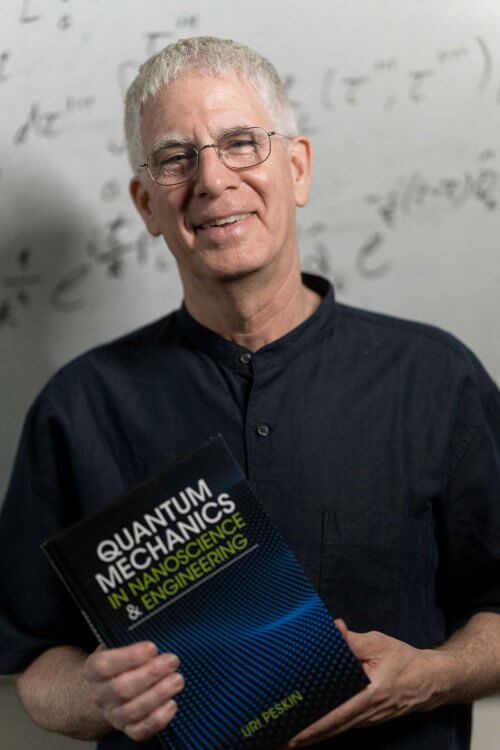
It goes fairly rigorously from basic QM to phenomena and processes in the “real world” (thermal, wet, dense,…).
Its unique pedagogical attitude formulates much of the technical steps as questions/guided exercises. Just reading these exercises already gives a flavor of the underlying proofs, for “easy” reading. More rigorous students would probably want to actively solve the exercises or follow the solution manual, to gain a complete hold on any claim and equation.
The book covers most of the topics in elementary courses of introduction to QM and to quantum chemistry, as well as some advanced topics including open quantum systems, charge and energy transport, and more.
preface-who-can-benefit-from-reading-this-book
quantum_mechanics_in_nanoscience_and_engineering
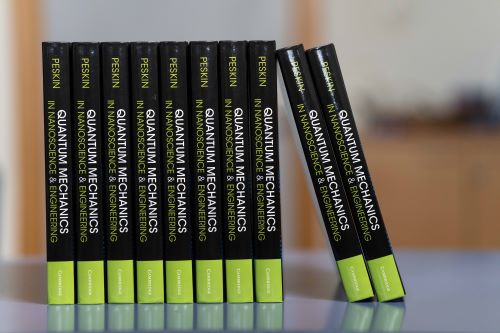
U. Peskin andN. Moiseyev, “The solution of the time-dependent Schroedinger equation by the(t,t’) method: Theory, computational algorithm and applications”, J. Chem. Phys. 99, 4590-4596 (1993).
U. Peskin and W. H. Miller, “Reactive scattering theory for molecular transitions in time-dependent fields”, J. Chem. Phys. 102, 4084-4092 (1995).
A. Edlund, I. Vorobeichik and U. Peskin, “High order perturbation theory for Helmholtz/Schroedinger equations via a separable preconditioner”, J. Comput. Phys. 138, 788-800 (1997).
M. Steinberg and U. Peskin, “A temperature-dependent Schroedinger equation based on a time-dependent self consistent field approximation”, J. Chem. Phys. 109, 704-710 (1998).
U. Peskin, A. Edlund, I. Bar-On, M. Galperin and A. Nitzan “Transient resonance structures in electron tunneling through water”, J. Chem. Phys. 111, 7558-7566 (1999).
M. Abu-Hilu and U. Peskin, “Promotion of Deep Tunneling Trough Molecular Barriers by electronic-Nuclear Coupling”, J. Chem. Phys. communication 122, 021103-0211106 (2005).
R. Volkovich, M. Caspary Toroker and U. Peskin, “Site-Directed Electronic Tunneling in a Dissipative Molecular Environment” J. Chem. Phys. 129, 034501-034508 (2008).
U. Peskin, “An introduction to the formulation of steady-state transport through molecular junctions”, J. Phys. B: Atomic Molecular and Optical Physics. 43, 153001-1530018 (2010).
Roie Volkovich and Uri Peskin, “Transient dynamics in molecular junctions: Coherent bichromophoric molecular electron pumps”, Phys. Rev. B. Brief Report, 83, 033403-033406 (2011).
Roie Volkovich, Rainer Haertle, Michael Thoss and Uri Peskin, “Bias-controlled selective excitation of vibrational modes in molecular junctions: a route towards mode-selective chemistry”, Phys. Chem. Chem. Phys. 13, 14333 (2011).
Uri Peskin “Quantum Mechanical Averaging over Fluctuating Rates”, Mol. Phys. 110, 729-734 (2012).
Daria Brisker-Klaiman and Uri Peskin, “Ballistic charge transport through bio-molecules in a dissipative environment” Phys. Chem. Chem. Phys., 14, 13835–13840 (2012).
Yoram Selzer and Uri Peskin, “Transient Dynamics in Molecular Junctions: Picosecond Resolution from dc Measurements by a Laser Pulse Pair Sequence Excitation”, J. Phys. Chem. C., Articles ASAP (2013).
Post doc: University of California at Berkeley, 1993-1995, theoretical chemistry.
Ph.D: Technion – Israel Institute of Technology Haifa, Israel, 1989-1993, theoretical chemistry
Awards
2012: The Yanai award for excellent in academic education.
2007: The Muriel and David Jacknow award for excellence in teaching.
2002: The Ulshwang research prize by the Israel Science Foundation.
1999: The Muriel and David Jacknow award for excellence in teaching.
1996: The Theodore and Mina Bergman academic lecturership.
1995: The Yigal Alon fellowship.
1993: The Fulbright fellowship.
1993: The Rothschild fellowship
| Name | Room | Phone | |
|---|---|---|---|
| Ariel Levine | ariell@campus.technion.ac.il | 220 | 2138 |
| Maayan Kuperman | skmaayan@campus.technion.ac.il | 220 | 2138 |
| anat kira | anatkira@gmail.com | ||
| Michael Iv | miko@campus.technion.ac.il | 219 | 3880 |
| Amir Ilan | amilan@ch.technion.ac.il | 220 | 2138 |
| Yoni Langbeheim | yonilang87@campus.technion.ac.il | 219 | 3380 |
| Linoy Nagar | linoy-nagar@campus.technion.ac.il | 220 | 2138 |

